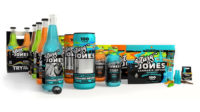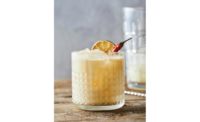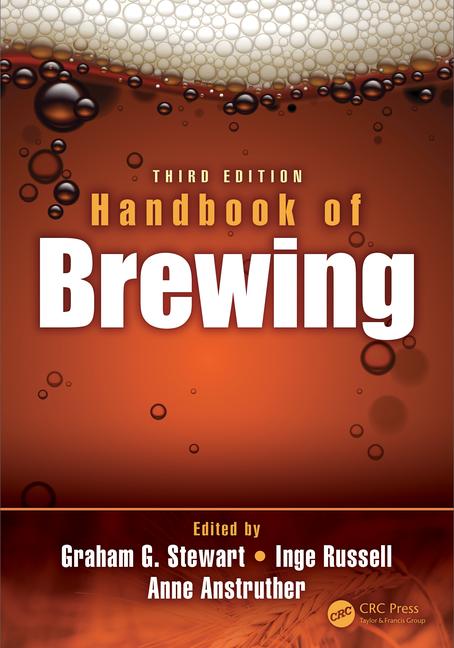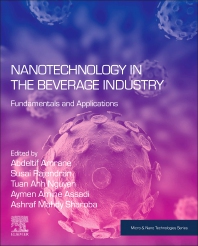Ingredient Spotlight: CBD
Regulatory environmental shifting as demand for CBD ingredients rises
Suppliers employ latest technologies for CBD fortification within beverages

Gem+Jane is a sparkling cannabis-infused botanical beverage that is low in calories, sweetened with agave and made with real juice.
Image courtesy of CannaCraft
In a science experiment, cloudy colored water typically used to dye Easter eggs will “magically” turn clear when a few drops of bleach is added. Although CBD has been around for hundreds of thousands of years dating back to 2737 BC when Chinese Emperor Sheng Neng used a cannabis-infused tea to aid with a variety of ailments, the CBD ingredient industry, despite the cloudy and confusing regulatory environment, continues to flourish.
One of the earliest plants cultivated by humanity and the CBD family of ingredients, hemp is a broad and multifaceted organism, featuring hundreds of different stains, colors, smells and potencies for consumers to try. Derived directly from the hemp plant, CBD ingredients, which account for about 40% of the cannabis sativa plant, are being formulated in a wide variety of alcohol and non-alcohol beverages. However, it is CBD’s association with medical treatments that have helped the phytocannabinoid achieve its status today.
In 2020, there were 3.2 million registered medical cannabis users within U.S. states where medical use currently is legalized, and that number is forecasted to grow to 4.9 million by 2025, states Brigette Thomas, industry research analyst at Los Angeles-based IBISWorld.
“Overall, the biggest barrier for the cannabis industry is the differing regulations state to state,” she says. “Since the use of marijuana is not legal at the federal level, laws surrounding the industry vary from state to state. This effectively stops companies from being able to expand or capture a large market share.”
Yet, a lack of federal legalization hasn’t stopped the rise of recreational marijuana users, which consists of 35-45% of the U.S. population, states Nandini Roy Choudhury, senior research manager for food and beverage and consumer goods for Fact.MR, Dublin, Ireland.

Image courtesy of Bawi Mana Holding LLC
“According to the Marijuana Policy Project, in 2021 5.4 million medical cannabis users within the U.S. were registered, while according to our estimation the number is expected to grow with a [compound annual growth rate] (CAGR) of 4.2% during the forecasted period (2021-2025),” Choudhury says. “Additionally, the acceptance of medicinal and recreational cannabis use in the United States has shifted dramatically. Sixty-three percent of the population in the United States has access to medicinal cannabis, which are becoming increasingly diversified and potent.”
In its December 2020 “Cannabis in the US” report, Chicago-based Euromonitor International reports that CBD sales in the U.S. grew 20% in 2020; however, this is a significant slowdown from 2019.
In 2020, there were 14.8 million CBD users, up from 13.2 million in 2019, the report states. “The CBD user base has seen rapid expansion since the 2018 Farm Bill making CBD products widely available,” the report states. “Despite its larger user base, CBD manufacturers have faced difficulty turning people who try CBD products once into regular consumers.”
Due to the adoption of the Farm Bill, it is technically legal to manufacture and sell CBD in all 50 states if it is derived from industrial hemp and contains less than 0.3% THC, says Kyle Einhorn, vice president of sales for Jeffersonville, Ind.-based HempRise. “However, some states have their own laws limiting THC levels or content,” he says.
Russell Thomas, Founder and CEO of LifeTonic, Boulder, Colo., notes that the market potential for CBD beverages is unlimited. “For now, we mostly see seltzers and sodas. But we also see teas — Harney & Sons, a big player in the tea industry, now markets a CBD-infused tea. Meanwhile, other tea brands are incorporating CBD into their teas. Some kombuchas and other probiotic beverages now also contain CBD, which makes a lot of sense. Probiotic drinks are functional, health-forward drinks to begin with, and, by adding CBD, brands are incorporating another layer of wellness to their beverages.

Image courtesy of LifeTonic
“One thing to consider with CBD beverages is the proliferation of dissolvable CBD powders that can be added to any beverage, from a beer to a glass of tomato juice,” Thomas continues. “These popular products can turn any drink into a CBD beverage.”
LifeTonic products are designed for consumers cutting back on their alcohol consumption or skipping booze altogether while still seeking ways to improve their mood with alcohol alternatives. “At the same time, functional beverages incorporating plant compounds like ashwagandha and turmeric as well as probiotics and prebiotics are gaining market share. Drinks infused with CBD — and increasingly other cannabinoids like CBN and CBG — fit squarely into this blossoming movement,” Thomas says. “Among the plant compounds, I think CBD stands apart.
“Huge, international beverage conglomerates are … launching brands that hinge on CBD. I think that as the sobriety and less-alcohol movement ripens, and as people grow increasingly interested in functional ingredients, CBD will be a major player, especially when the end products deliver on fast, noticeable results,” he continues.
Legal pathways open up
The growing acceptance by consumers, investment by large multinational companies and loads of new CBD product innovation has led to more states creating legal pathways for products with CBD.
“This is a state-by-state phenomenon,” says Glen Boggini, owner of Charles Boggini Co. LLC, Coventry, Conn. “CBD-infused products are definitely increasing. This is a fast growing market, especially with craft brewers. We are seeing CBD added to all types of beverages. There is no limit.”
Fact.MR’s Choudhury points out the different levels of legality for CBD. “Some states only allow it for therapeutic purposes, while some would permit it for both recreational and therapeutic purposes,” she explains. “The vast majority of states and jurisdictions allow the legal use of CBD in one form or another. A total of 46 states allow legal use of CBD oil in some measure, while 17 states only allow legal usage of medical marijuana.”
To date, 18 states and the District of Columbia have legalized medical and recreational marijuana usage for consumers 21 and older, while medical marijuana can be legally dispensed in 17 states.
Kelly Nielsen, vice president of insights and analytics at Boulder, Colo.-based BDSA, which provides actionable cannabis market intelligence, research and strategic guidance to companies, notes that the legal landscape is a hindrance to many companies entering the CBD market. The lack of federal oversight also is confusing for consumers.
“Companies are not able to communicate the benefits of CBD, so there could be confusion around what the product is supposed to do — which can lead to the product not living up to consumer expectations, which could limit repeat,” Nielsen explains. “Additionally, there is no oversight on labeling/ingredients etc., which can cause confusion around quantities, active ingredient, milligram content, etc.”

Images courtesy of MAD TASTY
Yet, as the economy continues to recover post-pandemic, IBISWorld’s Thomas surmises that the continuously evolving regulatory environment will continue to shift to favor the legalization of medical and recreational marijuana use. “As a result, I expect the popularity of cannabis products within the beverage market to increase along with the industry as a whole,” she says.
According to a “Cannabidiol Market Size, Share & Trends Analysis Report” from Grandview Research that included the medical and recreational end-user, the global cannabidiol market size was valued at $2.8 billion in 2020 and is expected to grow at a CAGR of 21.2% from 2021 to 2028.
“Due to its healing properties, the demand for cannabidiol (CBD) for health and wellness purposes is high, which is the major factor driving the market growth. In addition, the rising acceptance and use of products due to government approvals is a major factor expected to boost production for CBD-infused products,” the report states.
Dawn Riviere, West Coast business development manager for Flavor Dynamics Inc., South Plainfield, N.J., agrees that CBD as an ingredient in the beverage industry will continue to trend upward. “As they work to create products with broad use and appeal, beverage-makers that provide high CBD/low THC beverages have the ability to entice a more tentative consumer. Infused mixers seem to be a ‘stone’s throw’ away from the non-infused ones that are ‘highly’ recommended,” she says. “Without the strong psychoactive effect that THC has, CBD products appeal to those seeking its benefits without getting ‘stoned.’”
When formulating with CBD, Riviere suggests that developers need to consider the taste of the CBD material itself. “Does it have strong flavor notes that may need to be masked? Are there inherent aftertastes that could benefit from a synergistic flavoring?,” she asks. The company offers masking type flavors and a library of flavor options that pair well with many infused applications, she says.
Blossoming demand, technical leaps
The increasing demand from the pharmaceutical sector and rising awareness about the benefits of CBD is driving demand and increasing investment in the CBD industry. Yet, HempRise’s Einhorn notes that companies should thoroughly vet their source of CBD.
“Many companies claiming to produce CBD simply are not who they say they are from their website,” he explains. “Over the past several years people have ‘got into’ CBD production. However, most do not have the certificates, sanitary conditions, or process equipment necessary to make consistent high purity CBD. … There are likely less than 25 ‘actual’ hemp processors in the U.S. that do what we do, and only one to three facilities at the scale of HempRise.”

Image courtesy of HempRise
The 100,000-square-foot HempRise plant, the result of an $80 million local investment, debuted in the fall. The plant is designed to meet CFR 111 food processing compliance and is one of the largest hemp processing facilities in North America, it says. The company anticipates annual hemp processing of between eight and 10 million pounds, with scalability up to 15 million pounds.
To overcome the challenges of formulating with CBD, emerging technologies are making it possible to create consistent, predictable and fast-acting beverages that consumers love. “These technological leaps promise to vault CBD beverages to the forefront of the market,” LifeTonic’s Thomas says.
Because cannabinoids are hydrophobic, or insoluble in water, manufacturers have to put a binding agent with it to help it dissolve in various beverages, Fact.MR’s Choudhury says. Yet, even with a binding agent, oil and water naturally separate over time, and sedimentation occurs. That separation also can decrease the bioavailability of the CBD-infused beverage.
Used by most of the industry, nanoemulsions work by breaking down cannabinoids into oil droplets of about 100 to 1000 nanometers — the size of the fat globules in homogenized milk and about a thousand times smaller than a drop of oil, Thomas explains. Although this technology has reduced onset time to about 30 minutes, consumers want to feel the effect of CBD more quickly on par with caffeine or alcohol, he notes.
New technology that ionizes CBD and enables faster digestion and faster onset times (within 3 to 5 minutes) similar to alcohol and caffeine, which are about 0.5 and 0.8 nanometers in size, respectively, are emerging, Thomas reports.
“We developed a technology for CBD that is revolutionary [and is] protected by dozens of pending and granted patents,” Thomas says. “Rapid onset ionization technology converts cannabinoids from neutrally charged oils into electrically charged ions that are capable of dissolving in water. Cannabinoid ions are about 1.5 nanometers in size, which is about a million times smaller than a drop of oil. This small size eliminates the need for digestion. … As a result, cannabinoids are almost immediately absorbed into the bloodstream, providing noticeable effects faster than any other product.”
With plenty of new CBD products, streamlined technologies and consumers seeking to “mellow out” naturally, Euromonitor’s cannabis report predicts that CBD sales will reach $10.4 billion in constant value terms by 2025. A comprehensive regulatory framework from the U.S. Food and Drug Administration (FDA) also can drive substantial growth.
“Should the framework arrive within the forecast period, it could be a boon for the category if it allows manufacturers to make specific, targeted claims about the effects of their products,” the report states. “The possibility of FDA approval of further CBD products for medical usage could also benefit the category by lending greater credibility to the overall industry.”
Looking for a reprint of this article?
From high-res PDFs to custom plaques, order your copy today!










